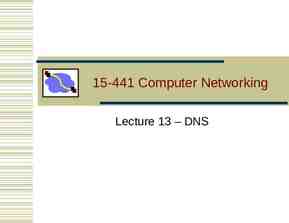Creating a Flexible Workplace Lori K. Long, Ph.D. Class One
34 Slides513.50 KB

Creating a Flexible Workplace Lori K. Long, Ph.D. Class One Employee and Labor Relations 2008

Learning Objectives Identify the environmental, societal and demographic trends that are causing an increased demand for flexible work options. Understand how flexible work options can benefit an organization and support an organization's strategy.

Learning Objectives, cont. Identify flexible work options and other employee policies, programs and benefits employers can offer to support a flexible workplace. Understand the process of designing and implementing flexible work options.

Class Activity Why do we need flexibility?

Growing Demand Role of technology Communication Information access Generational priorities Baby Boomers Generation Y

The Business Case for Flexibility Increases productivity Improves retention Helps meet diversity goals Aligns with social responsibility

Increased Productivity A meta-analysis of 31 studies on flexible work found that flexible schedules increased productivity and reduced absenteeism. 39 percent of employees with flexible work arrangements reported increased loyalty and a willingness to work harder. Approximately one-third of managers said their work group was more productive because it included employees who used flexible work arrangements.

Productivity – Organization Examples Flexible work options Merck, Unilever, Bank of Montreal, Starbucks, and Baxter International Telework program Cisco Flexible work arrangements McGraw-Hill Workplace flexibility Capital One

Improved Retention A Catalyst study found a strong correlation between a positive work/life culture and employee intent to stay at the organization. 73 percent of employees with high availability of flexible work arrangements say they would stay for at least another year.

Retention – Organization Examples Best Buy: 90 percent reduction in employee turnover. Deloitte: 41.5 million savings in turnover costs. Aflac: Employee retention improved from 87 percent to 94 percent.

Meet Diversity Goals Gender Age Disability Culture/religion

Social Responsibility Reduces commuters Supports families Supports the community Encourages ethical behavior

Class Wrap-up There are many reasons why flexible work is a good business decision. Before implementing flexible work options, employers should: Understand flexible work options (Class Two). Determine the goals of their initiative and select the right options for their employees (Class Three).

Creating a Flexible Workplace Class Two

Review Class One Demand for flexible work is increasing due to demographic and societal changes. Flexible work options increase employee productivity and retention; reduce absenteeism; support diversity goals; and align with social responsibility efforts.

Learning Objective Know the existing flexible work options as well as other employee policies, programs and benefits employers can offer to support a flexible workplace.

Flexible Work Options Categories: Alternate schedules Reduced-hour alternatives Telecommuting

Alternate Schedules Flextime Flexible schedule Compressed workweek

Reduced-Hour Alternatives Part-time work Job sharing Contract work Seasonal work

Telecommuting Full-time Partial week On occasion

Beyond Schedules Other programs, policies and benefits can support work/life balance. Such programs and policies build a flexible culture.

Class Activity Benefits of Work/Life Balance Initiatives

Class Wrap-up Before selecting the flexible work options, an employer should consider: Employee feedback Nature of work Phased implementation

Creating a Flexible Workplace Class Three

Review Class Two Many flexible work options exist, such as reducedhour and alternate work schedules. Employers can provide a variety of programs and benefits to support a flexible work environment.

Learning Objective Learn how to design and implement flexible work options.

Organizational Barriers Corporate culture Opposing policies Lack of understanding by managers

Planning for Flexible Work Research to build a business case Outside research Determine internal goals Involve employees Surveys Focus groups Exit interview data

Flexible Work Policies Simple is better. Ask employees to submit a written proposal. Consider how other benefits may be affected.

Resources Management training How to determine who can participate. How to measure performance outcomes. Employee support How to write the proposal. Coaching on how to work with flexibility. Networking opportunities.

Evaluating the Initiative Identify any issues and make any changes to improve the program. Justify the investment. Build support for future programs.

Class Activity Measuring Effectiveness

Module Wrap-up Creative employees and employers will continue to find flexible ways to work. Flexible work initiatives will likely become organizational “must-haves” as more employers and employees discover the benefits of flexible work.







